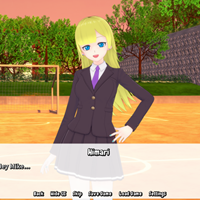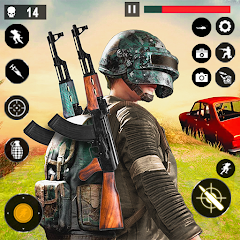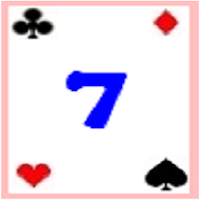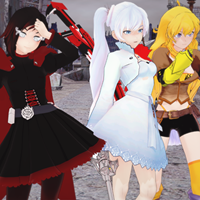Monster Hunter Wilds: Weapon Tuning and Design Philosophy
Players eagerly anticipate each new Monster Hunter installment, curious about their favorite weapon's feel. Each of the 14 weapon types retains unique characteristics while adapting to each game's design. Monster Hunter: World removed segmented quest areas, while Monster Hunter Rise introduced Wirebug mechanics. Weapon handling reflects these design shifts. This article delves into the design concepts behind the weapons in Monster Hunter Wilds, aiming for a seamless hunting experience.






This interview with art director and executive director Kaname Fujioka (also director of the first Monster Hunter game) and director Yuya Tokuda (involved since Monster Hunter Freedom) reveals weapon development details, including adjustments based on the November 2024 Open Beta Test feedback.
Seamless World Adjustments
Wilds' seamless map and dynamic weather necessitated significant weapon adjustments. Tokuda highlights substantial changes to Light and Heavy Bowguns and the Bow. Wilds' seamless design eliminates the need for base resupply between quests. Historically, ranged weapons used consumable ammo and coatings, potentially hindering Wilds' continuous gameplay.
"We designed basic damage sources to be resource-free," Tokuda explains. "Normal, pierce, and spread ammo for Bowguns and Bow coatings are unlimited, managed by a gauge. However, pre-prepared or field-gathered materials allow for crafting powerful attribute ammo."
Weapon changes extended beyond mechanics, impacting design. Fujioka notes: "We aimed to visually represent Bowgun charging for special shots, convincingly showing attack cancellations. We've focused on clear visual feedback since the previous game." Technological advancements facilitated these animation improvements. The ability to seamlessly transition between actions, stowing and switching weapons, expanded hunter capabilities.
"Weapons are designed for natural use in any situation," Tokuda emphasizes. "This is especially crucial during input limitations." Previously, healing required weapon stowing and movement cessation. Improved animation capabilities changed this.
Fujioka adds: "Wilds' Focus Mode, allowing directional movement during attacks, was meticulously crafted. Players can move while attacking off-center, controlling direction. We aimed to fulfill players' envisioned gameplay." Technological advancements in animation management and evolving game mechanics heavily influenced these changes.
Focus Strikes
Wilds introduces a wound system, created by accumulated damage to a monster's body part. Environmental factors (falling rocks, monster battles) also contribute. Focus Strikes, activated in Focus Mode, deal massive damage to wounded areas. Unique animations for each weapon type were created, initially leading to balance issues in the beta.
"Focus Strike animations highlight each weapon's uniqueness," Tokuda explains. "However, the beta revealed imbalances. While personality differences are desired, extreme disparities are undesirable. We're standardizing them for release."
The wound system adds strategic depth. For example, a head wound created by a hammer attack allows for a powerful Focus Strike, but transforms into a scar, preventing further head wounds. Late-game environmental interactions can lead to unexpected scarring.
"Monsters start unwounded, but Wilds' open world allows for pre-hunt monster interactions and turf wars," Tokuda explains. "Monsters might already have wounds when encountered. This can lead to advantageous hunts and special rewards, including gems."
Focus Mode and wounds enhance powerful attacks (like the Great Sword's Charged Slash). Monster health adjustments were made to maintain appropriate playtime and player satisfaction. Flinch resistance is higher, but Focus Mode's shorter combat loops maintain engagement.
Great Sword Tempo
Developing 14 weapon types required substantial effort. Tokuda explains the development process: "Around six planners oversee player experience, collaborating with artists and animators. The Great Sword serves as a prototype, followed by Sword and Shield and Heavy Bowgun, informing subsequent weapon development."
Designers and artists prioritized fun and visual appeal. Focus Strikes inspired the art team.
"Focus Strikes, a new expression, prioritized feel over performance," Fujioka explains. "The Great Sword, an all-rounder, is often the animation starting point. Its Focus Strike's success encouraged further weapon development."
The Great Sword plays a central role in animation development.
"Weapons with a heavy tempo like the Great Sword are rare in action games," Tokuda notes. "Ensuring Great Sword enjoyment is crucial. Other weapons are differentiated from this core."
The Great Sword's balanced design (blocking, AoE attacks, consistent damage) facilitates the creation of faster-paced weapons.
Weapon Personality
While aiming for balance, the developers prioritize unique weapon design.
"Focusing on unique design is preferable to equal ease of use," Fujioka states. "However, ensuring a satisfying player experience is crucial. Overpowered, easy-to-use weapons are problematic. Open beta feedback led to significant release version adjustments."
Tokuda uses the Hunting Horn as an example: "Its concept is area-of-effect damage. Utilizing sound effects, we explored damage output beyond simple attack chains. We focused on maximizing its personality."
Open beta feedback highlighted the Hunting Horn's potential as a powerful support weapon. Release version adjustments balance self-buffs to avoid it becoming the only viable secondary weapon choice.
Endgame and Build Customization
The decoration system in Wilds is similar to World's, with skill-based decorations. Alchemy allows for single-skill decoration creation, addressing the frustration of skill acquisition.
Fujioka recounts his World experience: "I never obtained the Shield Jewel 2, finishing the game with an incomplete build."
Tokuda prefers long-range weapons (Heavy/Light Bowgun) and the adaptable Sword and Shield, facilitating gameplay explanation. Fujioka's preference is the Lance.
"I'm a Lance main," Fujioka admits. "Positioning is crucial. Wilds' minor adjustment capabilities during attacks are beneficial for Lance users."
The Lance received significant open beta feedback, requiring substantial adjustments for release.
"The Lance didn't embody its concept," Tokuda explains. "Guarding, sticking to monsters, and counterattacking were hampered by issues like action timing, accidental actions, and delayed actions. We're making significant improvements."
The developers actively incorporate player feedback, aiming for a satisfying hunting experience. The dual weapon system encourages complementary weapon choices. The game's success hinges on player passion and developer dedication. A community update video details performance enhancements and weapon changes.






